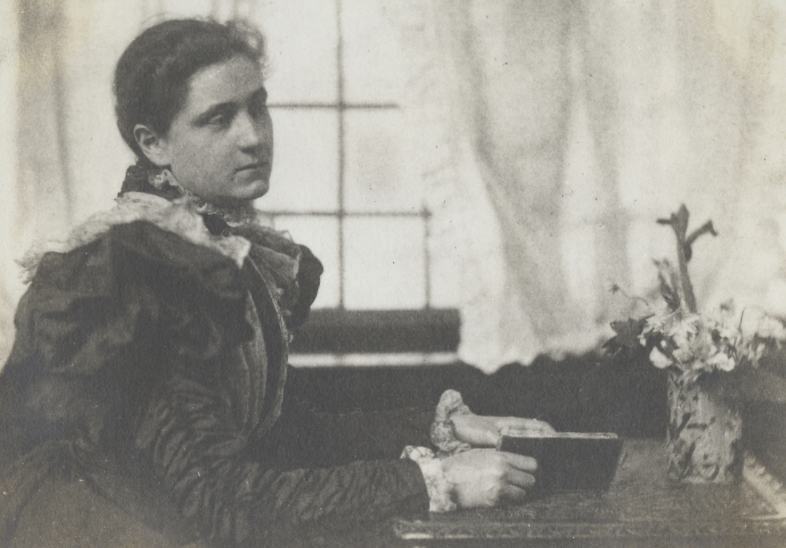Who was Enella Benedict?
/One of the most influential Residents of Hull-House was artist and arts educator Enella Benedict. She was the founder and long-time director of the Hull-House Art School. She was also the longest Resident of the Hull-House Settlement after Jane Addams, living and working there for nearly 50 years. Her work was intrinsic to the growth of Hull-House as an arts institution and laid the foundations for Hull-House's most important artists-in-residence.
Born in Lake Forest, IL in 1858, Enella was the daughter of Amzi Benedict, co-founder and mayor of Lake Forest. She attended Lake Forest University, where she studied painting and drawing. She went on to study at the School of the Art Institute of Chicago, as well as in New York and in Paris. She felt quite isolated in France - as a woman, she was often excluded from the arts community, which was dominated by men. She also received less instruction and paid higher tuition during that time.
The majority of Benedict’s work was rooted in the Realist and Impressionist styles. She depicted the people around her, including Hull-House Residents, and portrayed natural scenes within her many seascapes and landscapes. She worked mostly with oil and watercolors.
Benedict met Jane Addams and Ellen Gates Starr in 1889 very soon after they had arrived in Chicago. Living in the same boarding house for a time, they became fast friends, bonding over literature, philosophy, and spirituality. In 1893, Benedict became a Hull-House Resident and served as founder and director of the Hull-House Art School.
Emily edwards, enella Benedict’s Protégé, (far left, to the rear) teaching clay modeling at the hull-House art school.
The Art School taught clay modeling, drawing, painting, etching, and lithography classes for $0.15 a day. Prices for classes were kept low to allow for accessibility to the community. Benedict was never paid for the classes she taught at the Hull-House Art School. Her income came from the morning classes she taught at the School of the Art Institute; she then taught afternoon classes at Hull-House for free. She believed that art should be accessible to everyone and should not be considered a luxury. She worked by the principle that the arts can facilitate and enable social change and growth. The Hull-House Art School was treated as an institution that would foster that growth, cultivating a community of artists who could work together, exchange ideas, and learn from one another. During the Great Depression, she advocated for keeping the Art School open, and she brought artist and mapmaker Emily Edwards to Chicago from Mexico to head the art department and help expand the program’s workshops.
Enella Benedict, Houses and Street, date unknown.
Benedict’s work at the Art Institute allowed her to become a bridge between the two institutions – Art Institute instructors taught classes at Hull-House, and Benedict helped Hull-House artists become students of and display their work at the Art Institute. She managed the artist-in-residence program at Hull-House, which included Norah Hamilton, Emily Edwards, Leon Garland, Morris Topchevsky, Sadie Ellis Dreikurs, and Michael Gamboney. Benedict herself had over forty artworks displayed at the Art Institute over the years, and she had multiple paintings exhibited at the 1893 World’s Fair in the Palace of Fine Arts, the Illinois Building, and the Women’s Building. Her works also paid tribute to American laborers of multiple industries, with several decorating the Hull-House Labor Museum.
Enella Benedict, Brittany Children, 1892. exhibited in the 1893 Columbian World's Exposition.
Along with her work at the Art School, Benedict assisted in multiple areas of the Hull-House Settlement, including managing the Settlement’s entrance and gymnasium, maintaining financial accounts, and creating sets and costumes for performances in the Hull-House Theater. She also opened a library in the Clubhouse, where she helped children learn to read. Benedict was in many ways a steward of Hull-House stories. She published a column entitled Ms. Benedict Knows that shared happenings at the Settlement; after Jane Addams’ death, she became Hull-House’s resident storyteller.
Benedict died in 1942, in Richmond, Virginia and is buried in Rosehill Cemetery in Chicago. In 1938, the Benedict Gallery was opened at Hull-House as a permanent retrospective of her work. The gallery, like most of the Hull-House Settlement complex, was demolished in 1963 to make way for the construction of the University of Illinois Chicago campus. Our new limited exhibition, The Benedict Gallery: Revisiting Hull-House’s Arts Educators, seeks to honor the legacy of Benedict’s work at Hull-House and the enduring beauty of her art by revisiting the creation of a space dedicated to her within the Settlement’s walls and showcasing her work once more.






